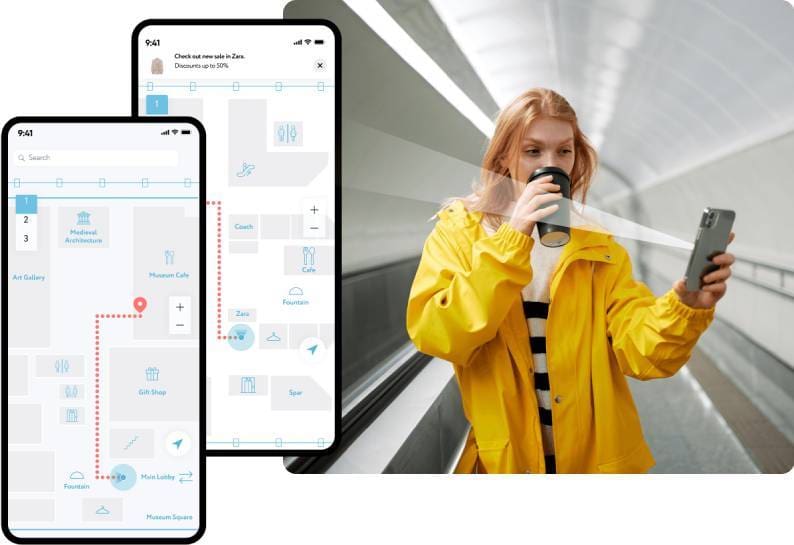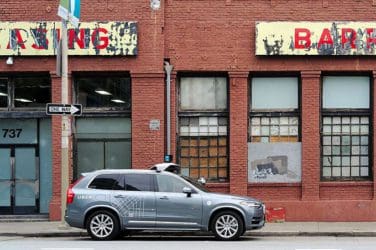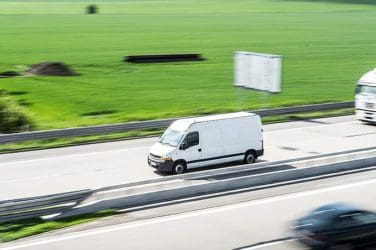words Al Woods
In recent years, retailers have been paying close attention to customer satisfaction and loyalty. These factors ensure the productive work of retail stores and help them survive the competitive race. To improve customer experience, many companies use indoor positioning technologies. Implementing these helps customers navigate the product range, allows for quick searches, and increases the average spend.
What is indoor positioning?
As of 2023, the global indoor positioning market has already reached $10.9 billion in volume. According to forecasts, by 2028, its average annual growth rate is projected to reach 22.3%, and volumes should increase to $29.8 billion.
Indoor positioning is a modern system used to integrate location-powered features, like asset tracking and indoor navigation. Using the technology, you can create routes around the facility, determine the location of objects in buildings, successfully trackingproducts, equipment, vehicles, and other assets. The system works well in places where satellite navigation is not sufficient and allows you to create effective mobile apps with navigation and positioning features for any area, including retail.
Technologies such as Bluetooth® Low Energy, Wi-Fi, and UWB are used to implement the system. To introduce it into the infrastructure, you have to install special beacons or tags that send out radio signals with specific identification codes. Readers receive signals from sensors and send them to the server for further processing. Then, the prepared data is transferred to a user’s smartphone or PC, where they can access a digital map.
In retail, indoor positioning is used to improve the quality of service and increase customer loyalty. The store visitor gets the opportunity to:
- quickly find the right products on the shelves or in departments;
- build short routes to the product, including building paths around the store while considering the shopping list;
- receive turn-by-turn navigation in real time.
Indoor positioning systems benefit both the customer and the store itself. Their popularity with retailers is due to advanced analytics of visitor behavior, which allows you to optimize the business processes and increase the average spend.
What opportunities does an indoor positioning system for retail provide?
Using indoor positioning in retail opens up a wide range of opportunities for stores. The system allows you to quickly find products on the map, build routes to get them, send personalized messages, and receive analytics of visitor flows to optimize the space.
Quickly searching for the desired list of products on the digital map
Some stores occupy large spaces with many floors and departments. Not every shopper can quickly understand their layout and find the right product. Traditional maps and signs don’t always help with navigation, so this is where an indoor positioning system for retailers comes in handy. To find any department or product inside the store, the user just needs to open the mobile app, log the desired items, and quickly find their location on the digital map. This solution reduces the time spent in the store and increases customer satisfaction.
Building routes to the right products/departments
Accurate indoor locations can be used effectively to build routes around the store. The system displays the shortest and most convenient routes to the desired products, which allows customers to save time and effort on shopping. Planning the store itinerary based on a shopping list increases customer interest in a particular store and encourages them to come back to that specific outlet.
Tracking customer flows to manage lines and notify cashiers
With indoor positioning, you can monitor indoor traffic and manage queues by increasing the number of cashiers. Additionally, the system can build heat maps that show the main concentrations of visitors. Based on this data, the management gets the opportunity to optimize shopping routes. Thanks to this solution, it’s easier for visitors to shop, and the staff can determine the priority tasks.
Optimizing store space with traffic analytics
An analysis of the attendance of certain zones helps the management better understand customer behavior and optimize retail space. After implementing indoor positioning systems, the store receives an accurate analytical tool that provides the following data:
- visit logs;
- total number of visitors, frequency of their visits, wait time;
- permanent and one-time customers;
- the most purchased products and brands;
- the most visited spots in the store.
This data helps resolve issues related to product placement. Based on analytics, you can arrange products so that they meet the needs of each customer.
Sending personalized notifications based on areas visited
One of the crucial features of a positioning system in stores is personalized interaction with customers. Thanks to analytics, the point of sale management can send targeted ads and targeted push notifications straight to users’ smartphones. So, let’s say when a customer passes by a product, the system sends them information about discounts, sales, or new arrivals in the store. Thanks to this, a person can take advantage of the offer that they would have otherwise missed. This individual approach is appreciated by many customers.
Benefits of using indoor positioning
A properly designed and configured indoor positioning system for retailers can drastically change the way a company operates. Once implemented, it becomes a sales force and provides stores with a wide range of benefits, such as:
- improving the efficiency of using e-commerce platforms, including order picking;
- increasing the average check by up to 20%;
- attracting new customers and growing sales volumes;
- improving the quality of customer service;
- increasing customer satisfaction;
- acquiring a direct communication channel with consumers;
- increasing the efficiency of targeted advertising;
- obtaining detailed analytics for successfully planning business processes.
To sum up, indoor positioning changes the shopping paradigm and helps outlets optimize their space. Using a system like that, customers can find products more quickly and get a solid user experience, while companies ensure stable profit growth.










